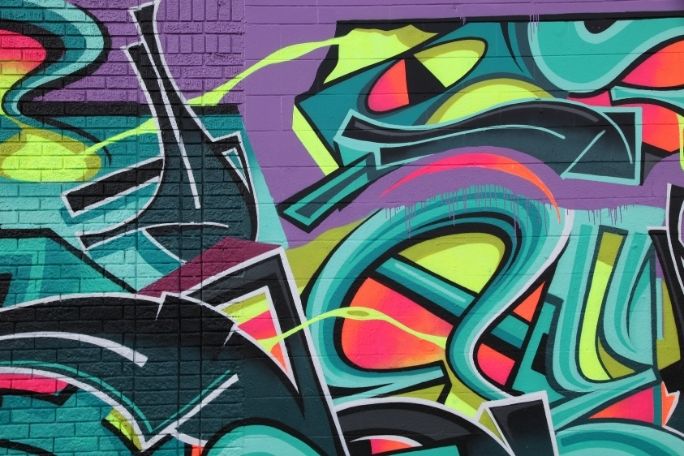Lesson summary
Students create a review (either written or podcast) of an exhibition for an online newspaper. Students will load their articles or podcasts onto a blog and will then assess the articles or podcasts of other students.
Learning intentions:
Students will...
- analsye how artists communicate artistic intentions
- recognize visual conventions used by artists
- understand how to write an online article or create a podcast, and how to assess the articles or podcasts of others
- think about what environmental issues are important to young people and how well these issues are represented in environmental art.
Lesson guides and printables
Lesson details
Curriculum mapping
Australian Curriculum content descriptions:
Year 7 and 8 Visual Arts:
- Analyse how artists use visual conventions in artworks (ACAVAR123)
- Identify and connect specific features and purposes of visual artworks from contemporary and past times to explore viewpoints and enrich their art-making, starting with Australian artworks including those of Aboriginal and Torres Strait Islander Peoples (ACAVAR124)
Year 9 and 10 Visual Arts:
- Evaluate how representations communicate artistic intentions in artworks they make and view to inform their future art making (ACAVAR130)
- Analyse a range of visual artworks from contemporary and past times to explore differing viewpoints and enrich their visual art-making, starting with Australian artworks, including those of Aboriginal and Torres Strait Islander Peoples, and consider international artworks (ACAVAR131)
Year 7 English:
- Plan, draft and publish imaginative, informative and persuasive texts, selecting aspects of subject matter and particular language, visual, and audio features to convey information and ideas (ACELY1725)
- Use a range of software, including word processing programs, to confidently create, edit and publish written and multimodal texts (ACELY1728)
Year 8 English:
- Create imaginative, informative and persuasive texts that raise issues, report events and advance opinions, using deliberate language and textual choices, and including digital elements as appropriate (ACELY1736)
- Use a range of software, including word processing programs, to create, edit and publish texts imaginatively (ACELY1738)
Year 9 English:
- Create imaginative, informative and persuasive texts that present a point of view and advance or illustrate arguments, including texts that integrate visual, print and/or audio features (ACELY1746)
- Review and edit students’ own and others’ texts to improve clarity and control over content, organisation, paragraphing, sentence structure, vocabulary and audio/visual features (ACELY1747)
- Use a range of software, including word processing programs, flexibly and imaginatively to publish texts (ACELY1748)
Year 10 English:
- Create sustained texts, including texts that combine specific digital or media content, for imaginative, informative, or persuasive purposes that reflect upon challenging and complex issues (ACELY1756)
- Review, edit and refine students’ own and others’ texts for control of content, organisation, sentence structure, vocabulary, and/or visual features to achieve particular purposes and effects (ACELY1757)
- Use a range of software, including word processing programs, confidently, flexibly and imaginatively to create, edit and publish texts, considering the identified purpose and the characteristics of the user (ACELY1776)
Syllabus Outcomes: EN4-4B, EN5-1A, EN4-2A, EN5-2A, VAS4.3, VAS4.7, VAS4.8, VAS4.9, VAS4.10, VAS5.7, VAS5.8, VAS5.9, VAS5.10.
Time required: 2 x 48 mins (plus time for viewing exhibition)
Level of teacher scaffolding: Low – oversee activity.
Resources required
- Access to an environmentally themed exhibition
- computers or tablets
- Internet access
- Student Worksheet
- Peer Assessment Rubric – Writing
- Peer Assessment Rubric – Podcast
- Tips for making a great podcast
- Tips for writing online
Additional info
This lesson is part of the CLIMARTE unit. The unit is designed to help students build their knowledge of climate change by exploring the topic through the arts. By harnessing the creative power of the Arts, CLIMARTE aim to inform, engage and inspire real action on climate change. Following this lesson plan is an ideal way to expose your kids to climate change through the medium of art.


Welcome back!
Don't have an account yet?
Log in with:
By signing up to Cool.org you consent and agree to Cool's privacy policy to
store, manage and process your personal information. To read more, please see
our privacy policy here(Opens in new tab).
Create your free Cool.org account.
Many of our resources are free, with an option to upgrade to Cool+ for premium content.
Already have an account?
Sign up with:
By signing up to Cool.org you consent and agree to Cool's privacy policy to
store, manage and process your personal information. To read more, please see
our privacy policy here(Opens in new tab).